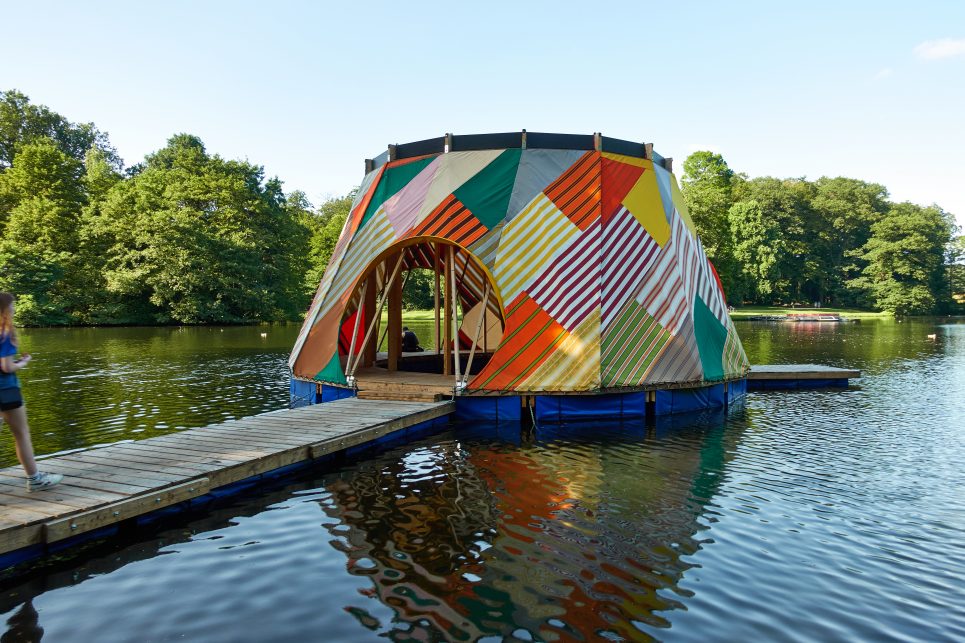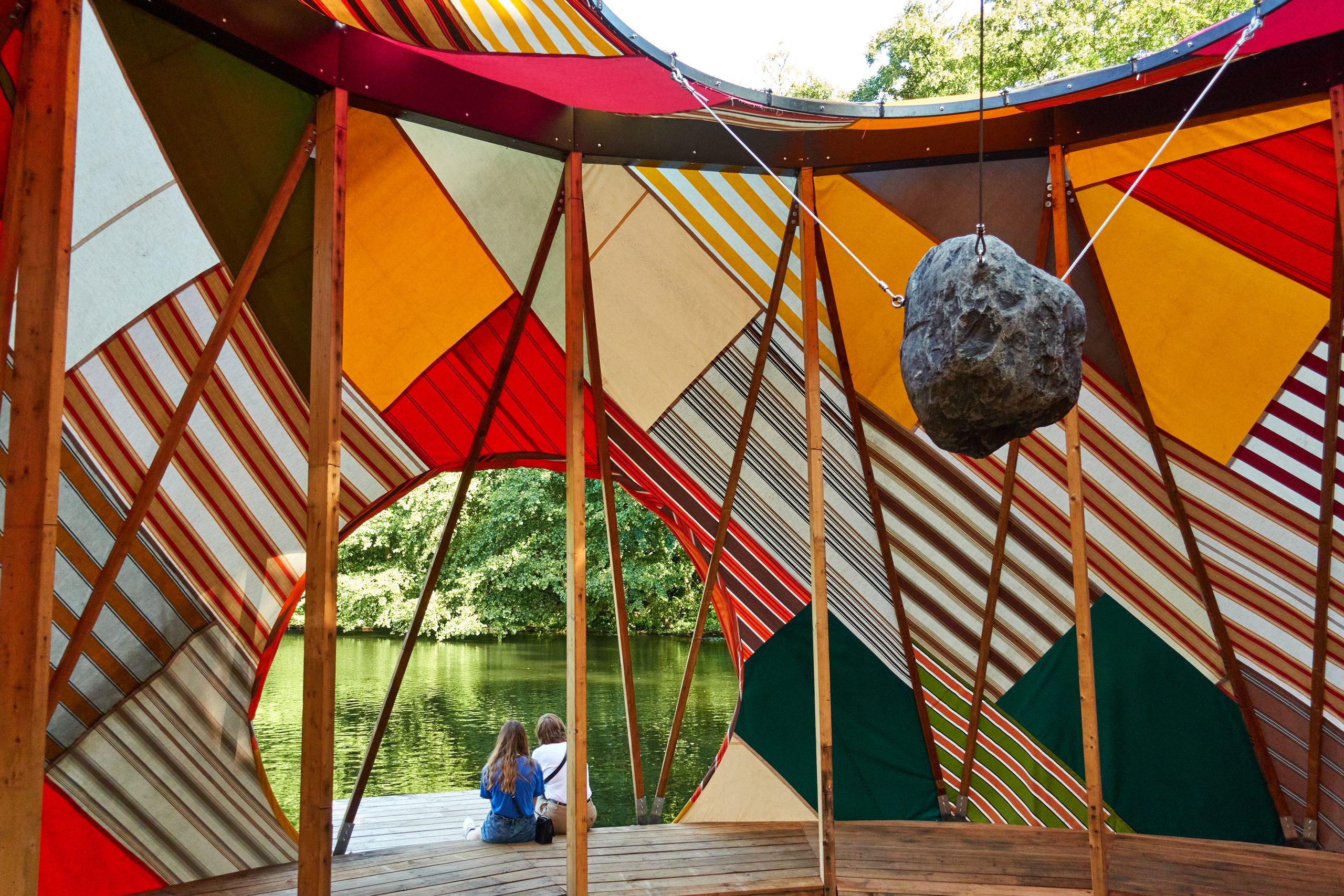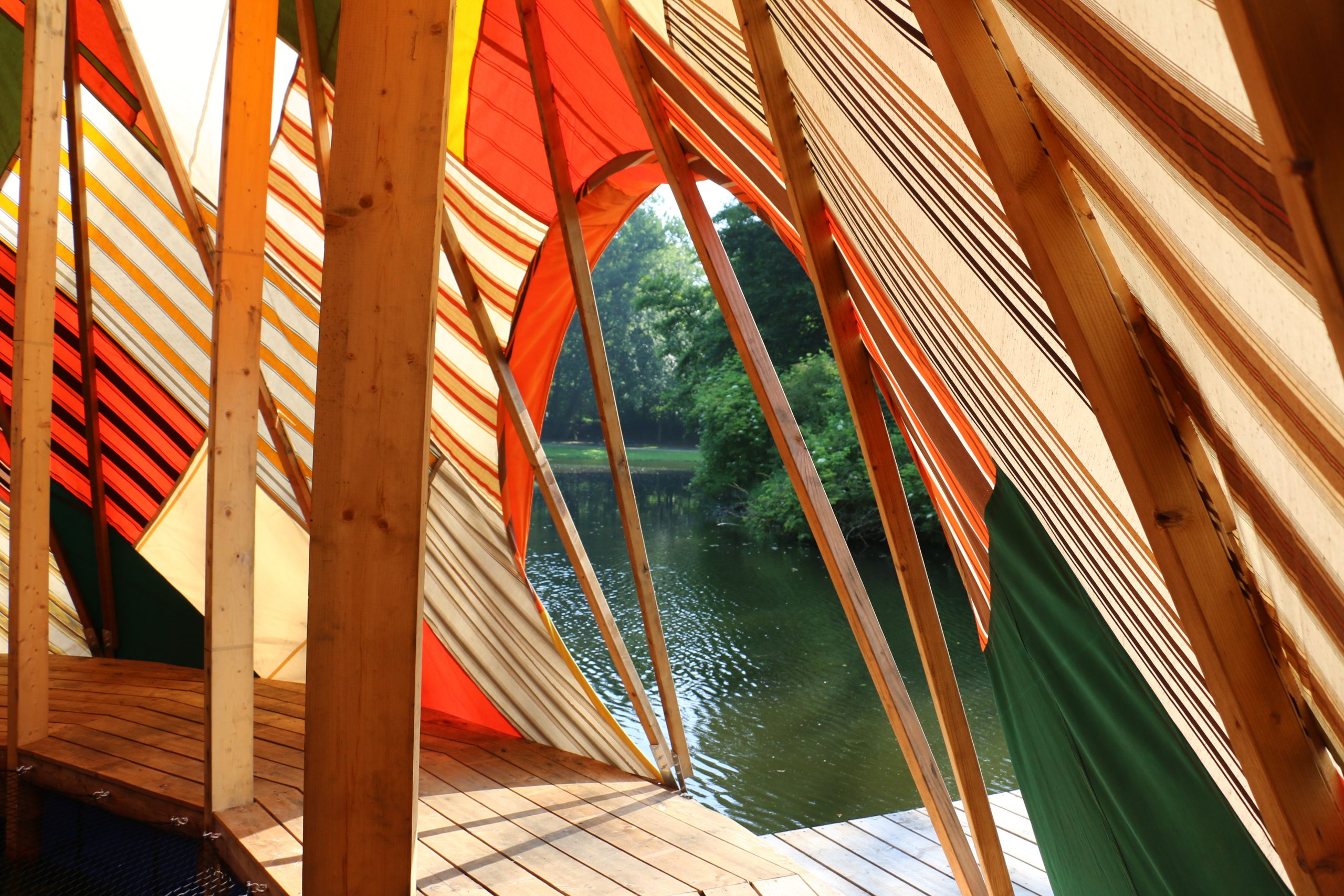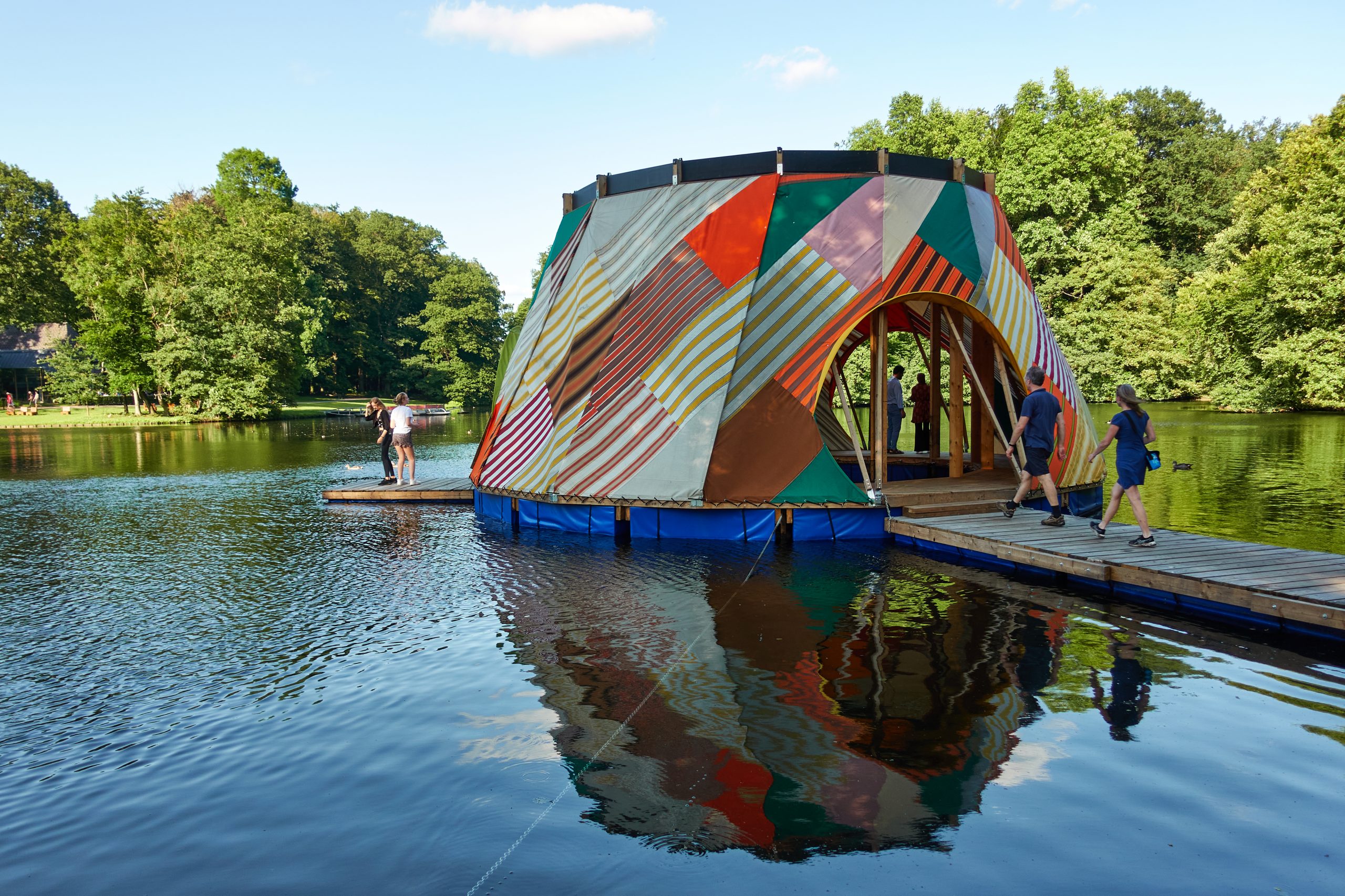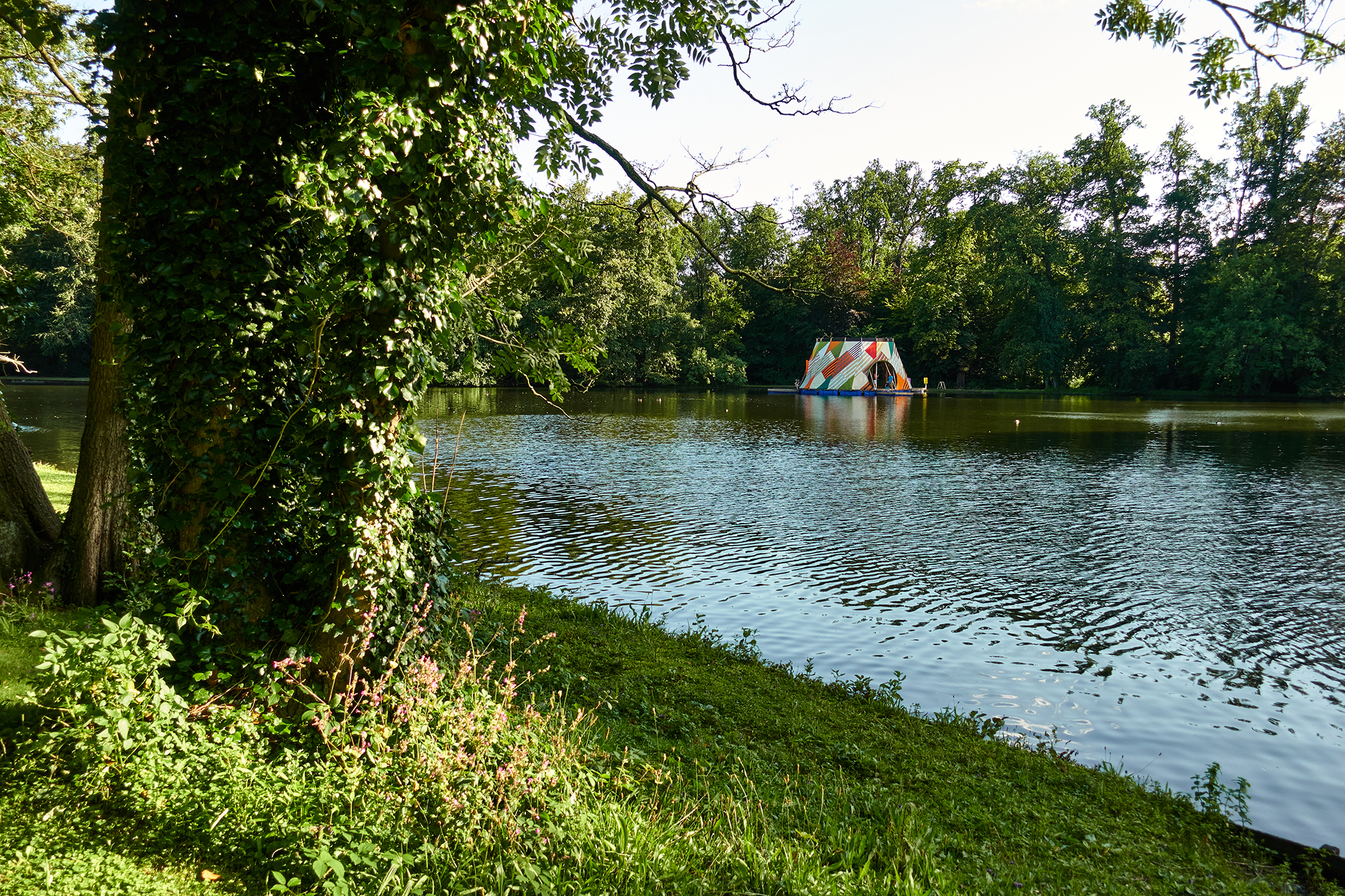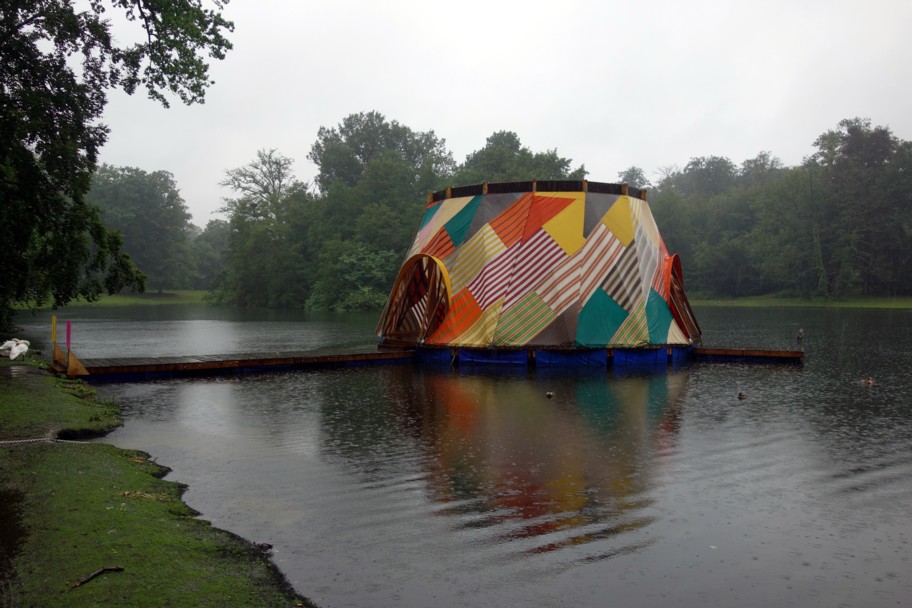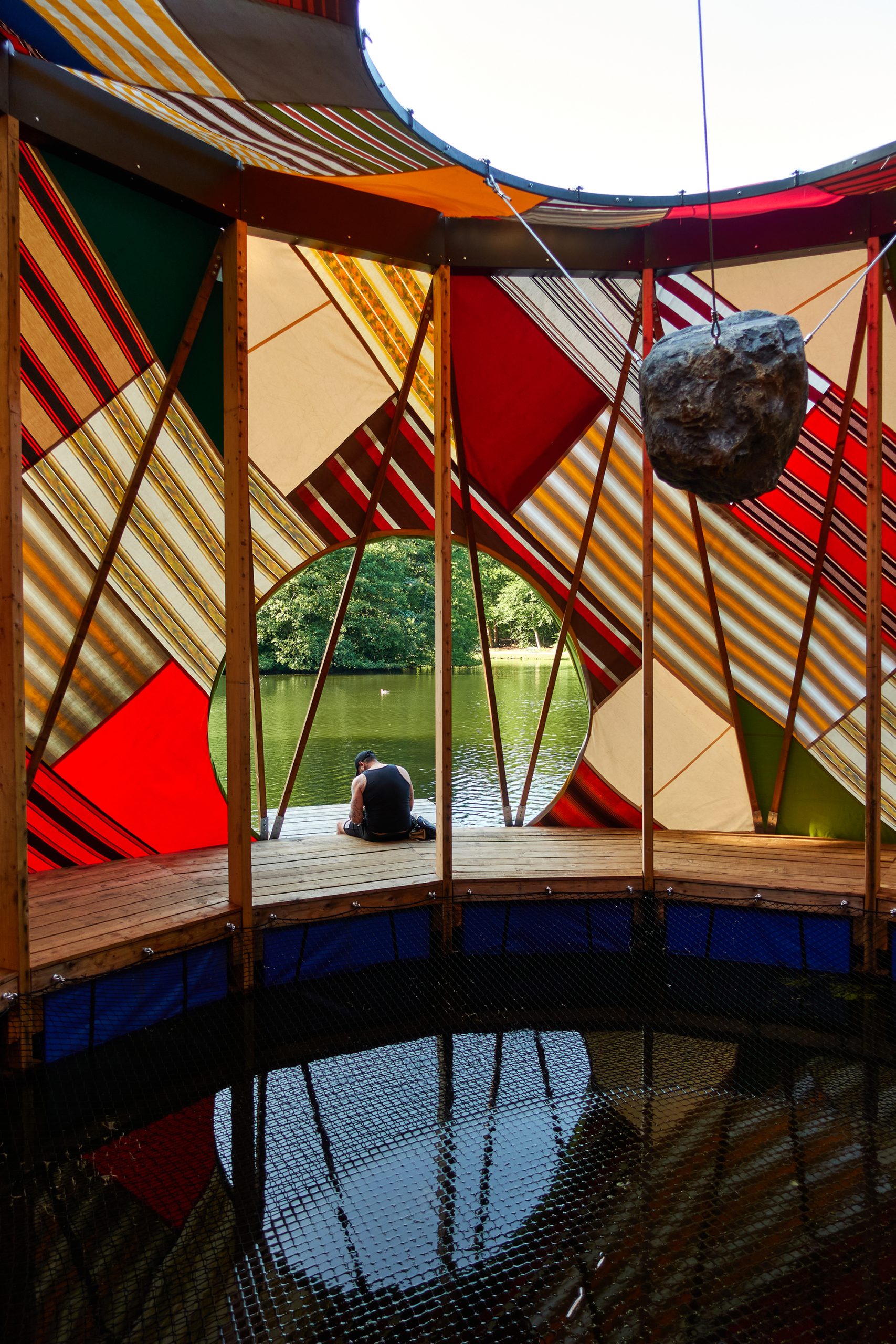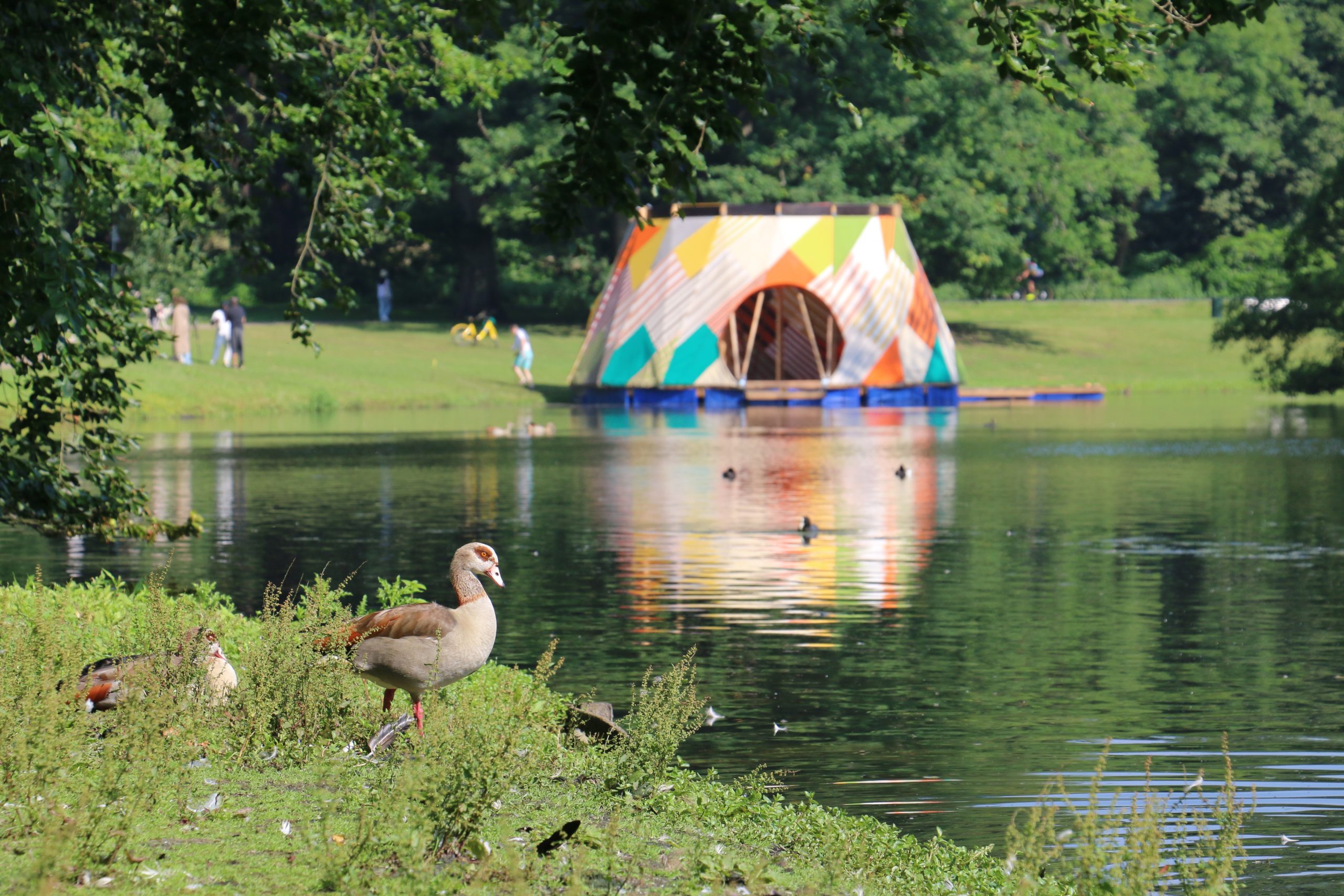Deep Encounter
Production Team raumlabor:
Albert Martin Tschechne, Julia Lipinsky (www.julialipinsky.de), Theo Göken
02.07.-29.08.2021
sonsbeek 20–>24 Force Times Distance
On Labour and Its Sonic Ecologies
sonsbeek2024 international contemporary art exhibition
artistic director: Bonaventure Soh Bejeng Ndikung,
curated by: Zippora Elders, Antonia Alampi, Amal Alhaag, Aude Christel Mgba
Deep Encounter is a floating pavilion built for the biennale „sonsbeek20→24: force times distance ⏤ on labour and its sonic ecologies“. It serves as a social gathering space and seeks to give equal consideration to both humans and nature in the park. The floating pavilion exists in nature but outside of its rules. Aside from the fact that it floats, the pavilion takes on a very artificial character. The round polygon shape of the Pavilion, a crystal-like constellation of triangles, is meant to emphasise its man-made qualities—floating starkly just off the shore of Grote Vijver, the park’s biggest pond.
Deep Encounter has a triangulated wooden construction which is wrapped tightly with textile. Made from recycled materials, from the outside the pavilion looks like an aquatic infrastructural element, such as a buoy or a rescue island. On the inside it offers a warm atmosphere. It is a remote space for encounter, experience and contemplation, inviting visitors not only to be in dialogue with one another but also with the surrounding fragile, man-made nature of the Park Sonsbeek.
The Pavilion does not seek control or curtail its surrounding nature. The Pavilion allows for the surrounding nature and elements to also enter and inhabit its space – a cohabitation of the human and the natural, a gesture in dialogue with our current concerns of the Anthropocene. The Pavilion does so through its porosity, opening along its thin membrane but also a small opening at the top and a large opening on the platform. The bottom opening is covered with a strong mesh, resembling a fishing net, permitting for visitors to get precariously close to the water below them. In addition, when it rains, the run off would flow into the pavilion from the opening on the roof, forming a water curtain on the inside – water too then becomes an important inhabitant for the Floating Pavilion. Suspended at the centre of the pavilion is a large rock like those brought to these lands during the ice age. It resonates with multiple possible readings. The way it hangs there can offer an atmosphere of contradiction against the geo-technical aesthetics of the floating pavillon’s general structure. It offers a center, inhabiting this place while obscuring the immediate diagonal view. The rock’s central placing gives it a totem-like characteristic, visitors would feel a kind of veneration for the rock, making it seem like the space meant for something natural or other beyond themselves – the ageless object of the stone. The central rock is a brute natural object, which is exposed to the elements in the pavilion and over time it’s meant to also grow an ecosystem of its own – being a foundation for smaller plant or animal life. It serves as a tensile structural element for the roof.
Within the Space of Encounter, one can find a heterotopic space, a dissonant but important sharing of natural and social experience, cycles of Biennale program share a platform with the natural systems of the park.
